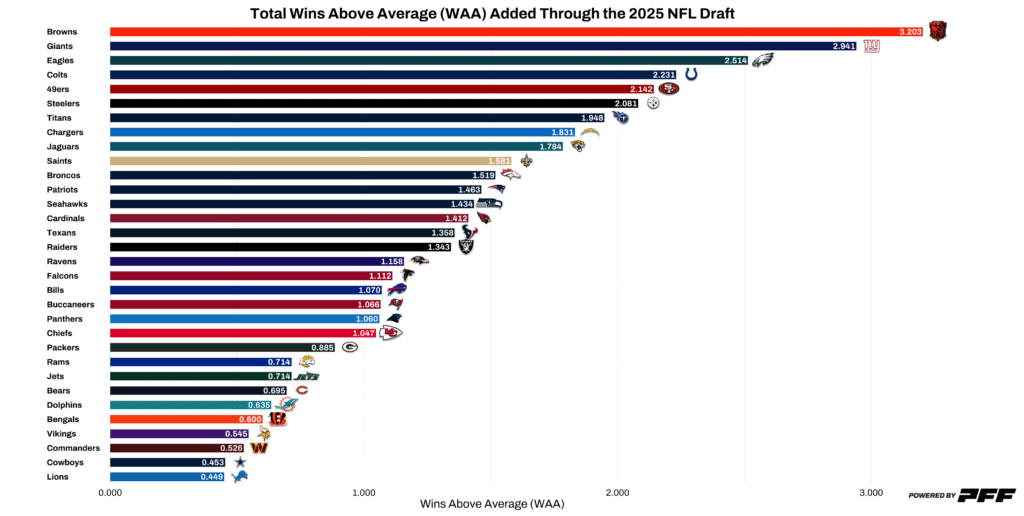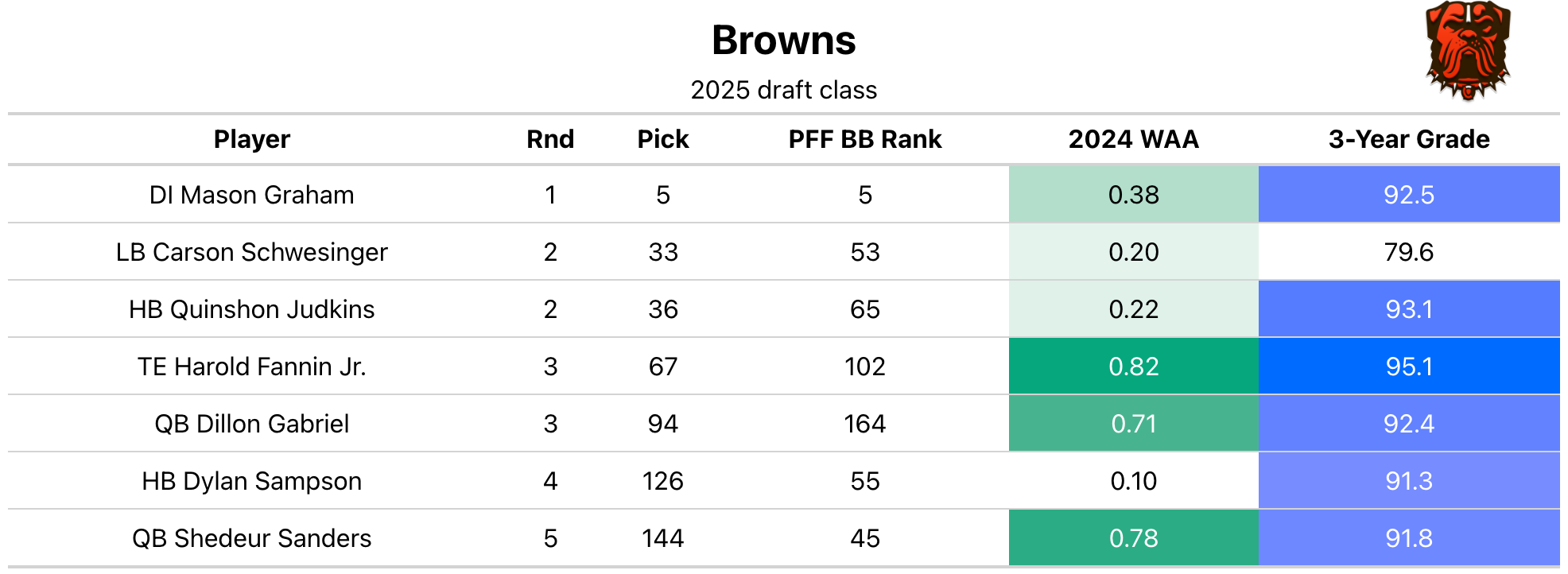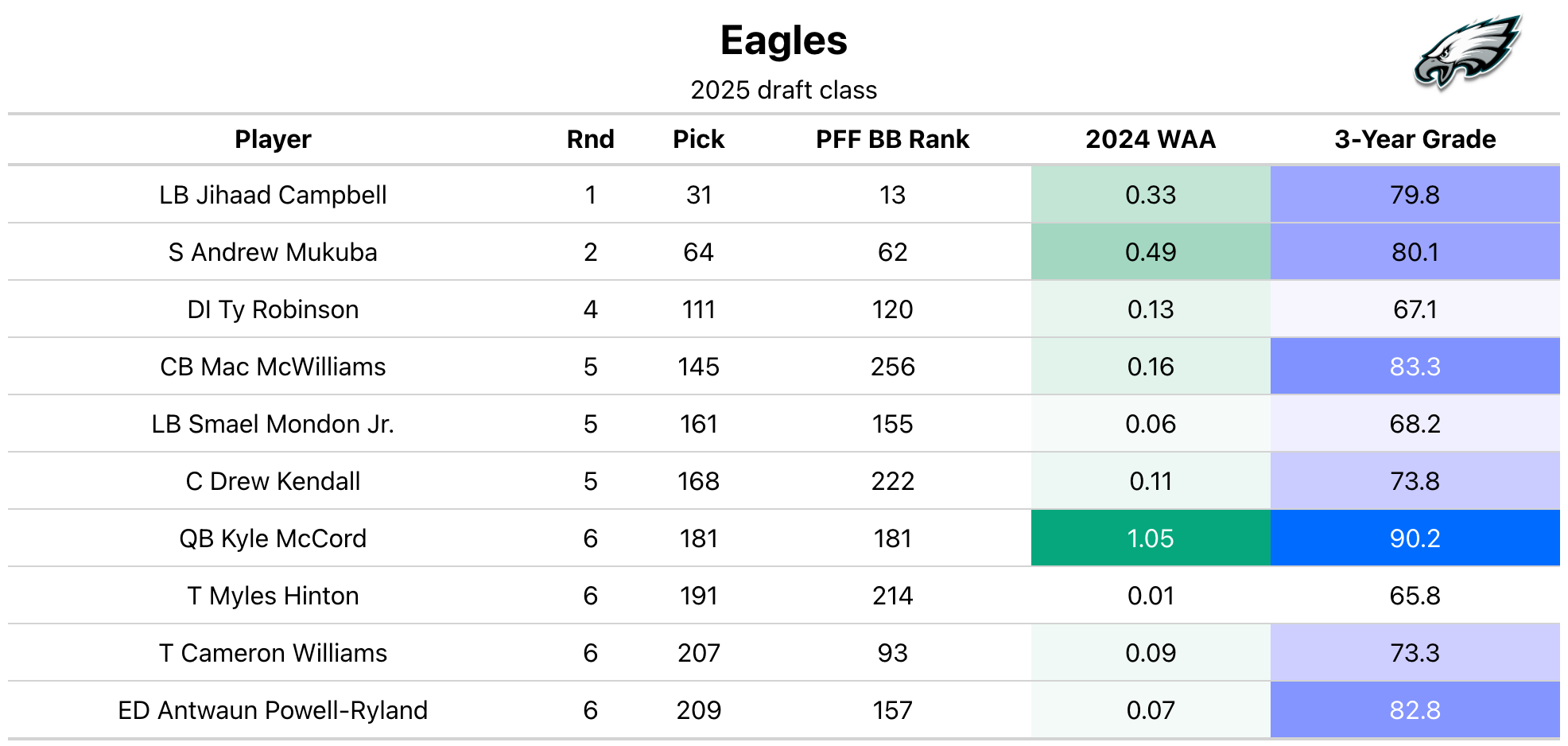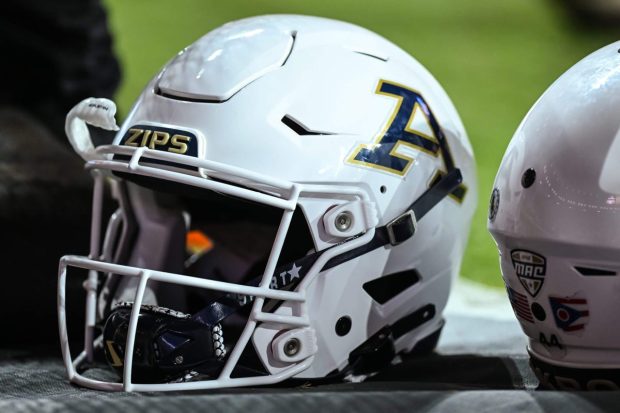
- The Browns lead the way: Cleveland added 3.203 WAA, with TE Harold Fannin Jr. (0.818) and QB Shedeur Sanders (0.777) leading the charge. The Browns doubled up at quarterback and landed elite production at tight end and on the defensive interior.
- The Titans take second: Tennessee added 3.099 WAA, led by QB Cam Ward (1.225) — the No. 1 overall pick and a top-20 player on PFF’s big board. They followed up with intriguing contributors such as edge rusher Oluwafemi Oladejo (0.170) and WR Chimere Dike (0.152), blending premium position focus with athletic upside.
- Subscribe to PFF+: Get access to player grades, PFF Premium Stats, fantasy football rankings, all of the PFF fantasy draft research tools and more!
Estimated Reading Time: 3 minutes
In any conversation about how good a football player is, there will always be some degree of disagreement — whether it’s casual fans debating their favorite team’s picks, scouts evaluating a player’s strengths and weaknesses or coaches considering scheme fit. Opinions vary, and that’s part of the process.
Wins Above Average (WAA) is designed to help cut through that subjectivity. It estimates how many wins a player is worth above an average college football player, offering a standardized, data-driven method of assessing performance. The metric combines a player’s PFF grades across various facets of play with the relative value of each facet to winning football games. The result is a first-of-its-kind metric that enables cross-positional comparisons and offers predictive insight into a player’s future value. You can read more about PFF WAA and the process by clicking here.
WAA has several applications, but here we are using it to evaluate and rank each team’s 2025 draft class. However, it is very important to note that this isn’t a black-and-white verdict on which team “won” the draft. Because WAA is based on positional value and snap volume, the rankings naturally skew toward teams that made more picks and targeted premium positions. Teams that drafted multiple quarterbacks or invested in high-impact roles like wide receiver or edge defender are more likely to rank near the top. Meanwhile, teams that focused on lower-value or more stable positions, such as interior offensive line or tight end, may fall lower in the standings, even if they added long-term contributors.
And for context, WAA reflects a player’s on-field performance and value from last season in college — it’s not a projection, but a summary of what they’ve already put on tape.
Click here to jump to a team:
CLE | NYG | PHI | IND | SF | PIT | TEN | LAC | JAX | NO | DEN | NE | SEA | ARZ | HOU | LV | BAL | ATL | BUF | TB | CAR | KC | GB | LAR | NYJ | CHI | MIA | CIN | MIN | WAS | DAL | DET

1. Cleveland Browns: 3.203 WAA added

2. New York Giants: 2.941 WAA added

3. Philadelphia Eagles: 2.514 WAA added

This news was originally published on this post .










Be the first to leave a comment